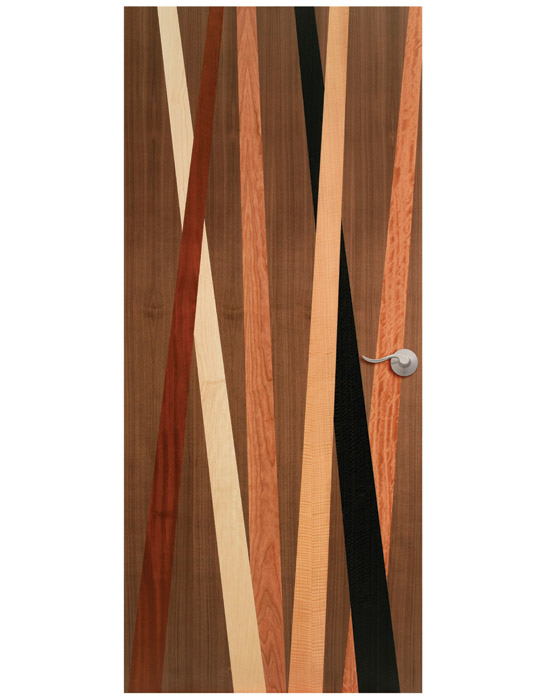What Architects Need to Know About Specifying Wood Doors
Face Options
Both AWS and WDMA quality standards recognize multiple face material options.
Wood veneers. Wood veneers are available in multiple grades, matches, and assemblies to meet design requirements, including domestic and exotic selections. Natural variations of the veneer and different cuts create unique textures, grains, figure, and color for each veneer piece and door. While seven-ply construction with three-ply skins is only available in limited species, many species are available including exotic veneers for five-ply construction. Plain sliced or flat cut, quarter sliced, rift cut, and rotary are common veneer cutting methods. Door manufacturers follow WDMA standards for veneer grades, which are adapted from the Hardwood Plywood Veneer Association (HPVA, www.hpva.org).
 |
Wood Veneer Door Image courtesy of VT Industries, Inc. |
High-pressure decorative laminate (HPDL). Offering endless design possibilities and increased durability over wood veneer, HPDL faces are consistent, durable, cost effective, and available with custom designs and in a full array of patterns, solid colors, and wood grain finishes. HPDL doors do not require on-site staining, sealing, or painting and have minimal maintenance costs. Edge-before-face construction minimizes the appearance of seams and reduces chipping by limiting potential contact areas.
Paintable surfaces. Mill option paintable surfaces provide paintable options and a uniform surface with no raised grain, knots, or flaws for opaque finishes. Doors are available pre-primed, reducing the need to sand or prime in the field.
Fiber-reinforced laminate (FRL). FRL is ideal for highest-traffic applications, such as schools, hospitals, and hospitality, because of stain resistance and increased durability over other face materials. FRL outperforms other engineered face materials in wear resistance and is available in a variety of patterns and wood grains, similar to those available with HPDL.









